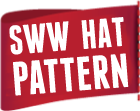
We caught up with this year’s patrons, the Doull family, to ask them about their involvement with the Flock Book, life on the farm and how the design came about for the Islesburgh Toorie.
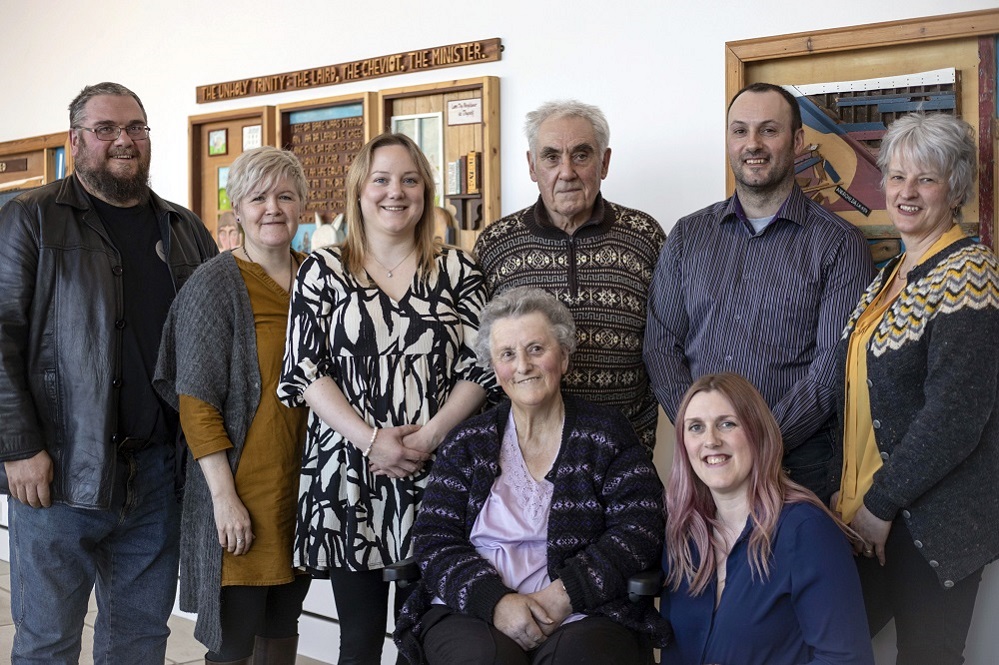
The Doull Family. Back row – Addie is fourth from the left. Front row – Margaret & and her daughter Anne
Q. Congratulations on being announced as this year’s Shetland Wool Week patrons for 2024 – the first time for a family. The committee wanted to recognise your commitment to the Flock Book and the preservation of high-quality Shetland wool. What does being Patron mean to you all?
Addie & Margaret – It’s an honour to be asked to be the patrons for the 2024 Wool Week and a total surprise.
Anne – I’m extremely proud for Mam and Dad to be asked to be this year’s patron and chuffed to be invited to do it along with them and design the hat.
Q. Anne, tell us about the process behind designing the Islesburgh Toorie – which has perhaps taken you out of your comfort zone?
I really enjoyed designing the toorie and the whole process, and am so thankful for all the advice and support from Donna Smith and Victoria Tait. They both had their work cut out – but we got there.
I’m probably more out of my comfort zone worrying if people will like the toorie. It’s very daunting following in the footsteps of the likes of Wilma, Linda and Alison, the patrons who have been in my short Wool Week involvement.
The Ram’s head was a definite from the first mention of designing the hat to recognise the Shetland Flock Book Trust and the family’s involvement in it over many decades.
The idea to include a lace aspect came a couple of weeks later and that’s when I had the idea to try and plot the Print O’ Da Wave into a Fair Isle design and that tied in nicely with mam’s lace knitting and our connection to the sea: we’re surrounded by it. The men have all worked on it and we do have to cross it to work with the sheep on the isles.
Colours were always going to be naturals; the purple heather and sea themed. Naturals for the various colours of our flock, Purple Heather for the magnificent colours we are blessed with when the heather is in bloom and the Sunset Sea colourways are a regular sight in Shetland.
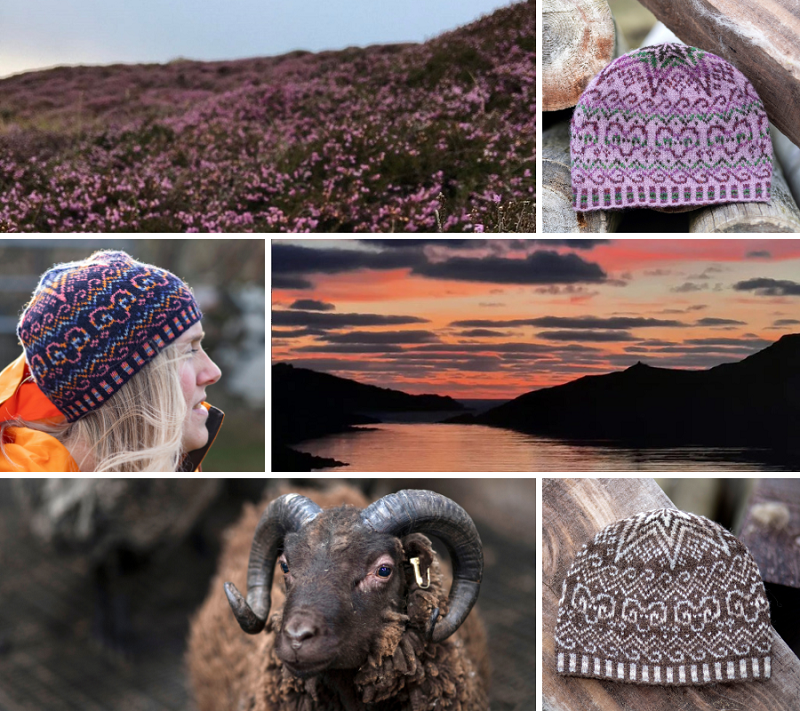
The name was another task… we thought we had it chosen, but lack of due diligence on my part meant I never checked, and there was already a toorie by that name – so back to the drawing board and many names were suggested and discussed. I did have to put a halt to it as I had to focus on the design and colour choices, as at one point, I thought we’d have a name but no toorie. Once that was all done and the test knitters were busy knitting we decided on Islesburgh Toorie, a name that had been suggested at the beginning but sidelined.
Q. Did it take a long time to come up with the design and the different colourways?
It was the middle of December that we got the phone call asking if we would be this year’s patrons and as soon as I came off the phone ideas were running through my mind, so I started making notes, plotting charts.
We had the Northmavine Up-Helly-Aa which Alan was this year’s Guizer Jarl and we were all involved in the squad so it was full on trying to think of hat designs and what need to be done for UHA.
So, the first meeting I had with Donna and Victoria was the Monday after Up-Helly-Aa, thankfully we caught a window before I fell ill for a few days with the dreaded ‘UHA Lurgy’ but once fit again it was full steam ahead to get the design plotted before choosing the colours.
Again, thankful to Donna for the colour blending session and both Donna and Victoria for their feedback on swatches that I sent over. Also huge thanks to the wool producers for their help and generosity with the wool supplied based on my vision. I felt like a bairn at Christmas with some of the parcels of wirsit I was given, absolutely spoilt for choice.
Q. In your navy colourway, you’ve used the most vibrant of colours which makes the pattern really sing. What gave you the idea to combine bright pink, orange and blue together – and how did you make it work?
The inspiration for this colourway came from a photo I took whilst feeding the sheep at Mavis Grind.
We sent the photo over to Jamieson & Smith and they selected five colours that would work. I just had to place them.
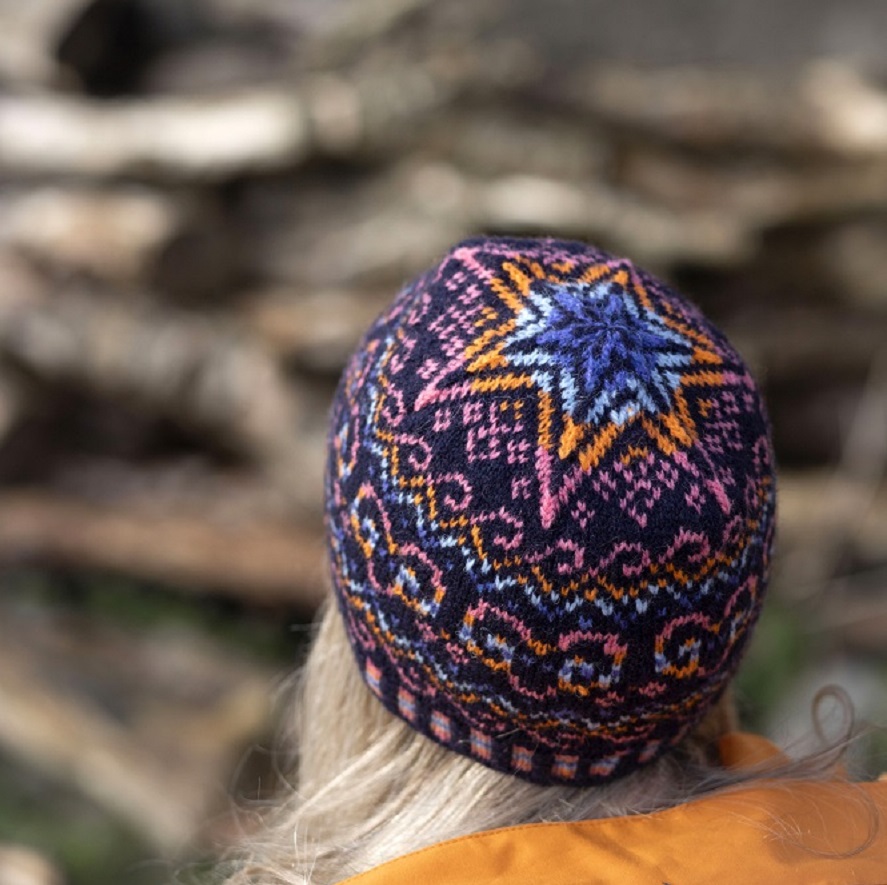
Q. Having an interest in the Flock Book must give you a love of the natural and undyed Shetland shades. They have such fantastic descriptive names. How did you settle on the natural colours to use in the Islesburgh Toorie
Again, I was spoilt for choice with the yarns Ronnie provided and it was really interesting speaking to him about the colours and how they are dyed over the natural colours.
But I was already decided on just the Natural Wool colours, Moorit, White, Greys to show off the lovely natural colours of the Shetland Sheep and also the Uradale Yarns are from Organic flocks.
Q. Do you have a special ram that the pattern is inspired by? How hard was it to get the shape right, to capture those distinctive horns? Did you try using the ram design on the crown, or do you always feel it more naturally fitted into the body of the Toorie?I didn’t have a special ram to base the pattern on. I just went from memory and tweaked it to what looks most like a Shetland Ram.
The first attempt probably would have been suitable for a jumper but after the initial meeting with Donna and Victoria I was given some ideas how to scale it down and make it work for the hat.
I wanted the ram in the body of the toorie to make it stand out more.
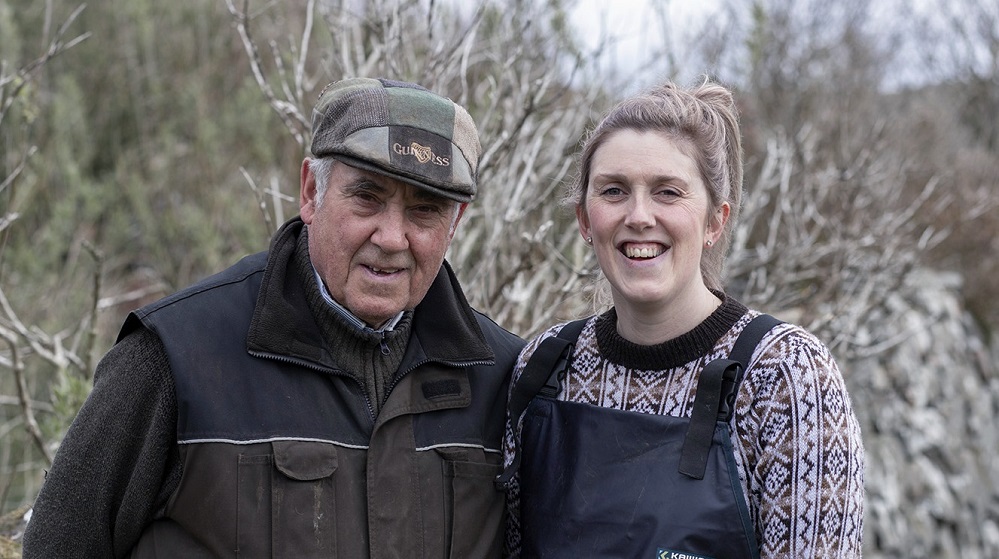
Addie with daughter Anne
Q. Fair Isle design is usually known for pattern repeats. You’ve taken two very distinctive shapes – the ram and the wave – and put them together in a way that is still distinctively ‘Fair Isle’. How did you work out the pattern placement to make them work together so well?
I plotted the ‘print of the wave’ and found the repeat (8 stitches), the width of the ram was 17 stitches. I had to look over other hat patterns to get an idea of number of stitches to cast on and increases, so a quick bit of maths figured what the repeat of the ram should be and luckily just had a space of 3 stitches between heads which worked out fine.
Q. One of the technical challenges must have been how to avoid carrying a large float between the rams – how did you resolve that?
The biggest float was going to be about 15 stitches, which you can catch the floats but I decided to add in some small patterns to add more pops of colour to the toorie. That’s the beauty of Fair Isle: you can add in small patterns and stitches.
Q. The purple shade captures the hills in Shetland when the heather is in bloom. How did you work out how much of the greens and darker purples to use to complement the lovely background colour?
I wanted more purple as when the heather is in bloom it fills the hills, and just a hint of the greens to peep through.
Q. What’s your favourite colourway?
I canna choose a favourite. I’m really pleased with how they’ve all turned out and I’m sure over the next few months I will continually be wowed by everyone else’s colourways.
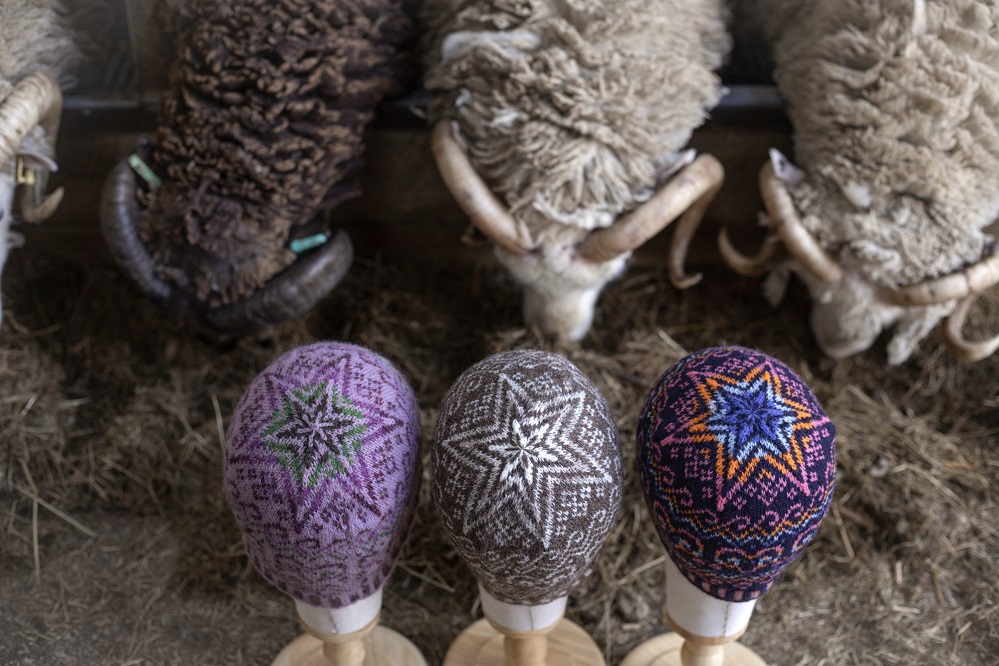
Q. How many ideas and colourways did you try before you were satisfied with the final designs (Alison Rendall is currently the record holder for this one 😊)
There was a lot! I am now a swatch convert. Before I would just pick colours and go for it and if it didn’t work, spret it back and redo it, but with the time constraint and selection of colours I had to swatch. I really enjoyed the process and having that to keep afterwards for reference on colours. I think the final tally of colour swatches was four for Jamieson & Smith, seven for Uradale and 12 for Jamieson’s of Shetland.
Q. Anne and Margaret, when did you learn knitting? Who was your biggest inspiration? Tell us what knitting means to you and why you share your skills.
Margaret: I have knitted since I was about five and when I left school I machine knitted for Tulloch’s of Shetland from home at Aithsness in the old ben end of the house; I still have that machine. I gave that up when I married and moved to Islesburgh in Northmavine, but the machine came with me, and I knitted on it up until I had the stroke. I was knitting Fair Isle yokes for a lady in Orkney. I also hand knitted lace. After the stroke I relearned to knit and now after a few years I am back to knitting fine lace. I’ve not mastered Fair Isle again, but will have to now to make an Islesburgh Toorie.
Anne: I learned to knit at school and unfortunately didn’t continue after that. Mam was always knitting lace and Fair Isle so if I wanted a yoke she would make it. She’d make the body on the knitting machine and hand knit the yoke in. Then when Wool Week took off and Fair Isle knitwear became more prominent/fashionable and there were a lot more wearable items – snoods, wrist warmers etc. Mam had had the stroke but was back knitting lace but not Fair Isle so I decided that I should pick up the wires (needles) again and make what I wanted (I also thought it would help use up her wirsit stash, but that only seems to have increased…)
Q. How long have the family been farming at Islesburgh in Northmavine? Do you come from a family of crofters/farmers? Is the farm very much a family affair? Who’s involved?
Margaret & Addie: We have been farming at Islesburgh from 1970. We are both from farming backgrounds. The whole family and Addie’s brother Kenny are involved with the farm and crofts, all helping each other to get the work done. We also have other family and a couple of local gents who will come and help during the clipping and other times of the years when required.
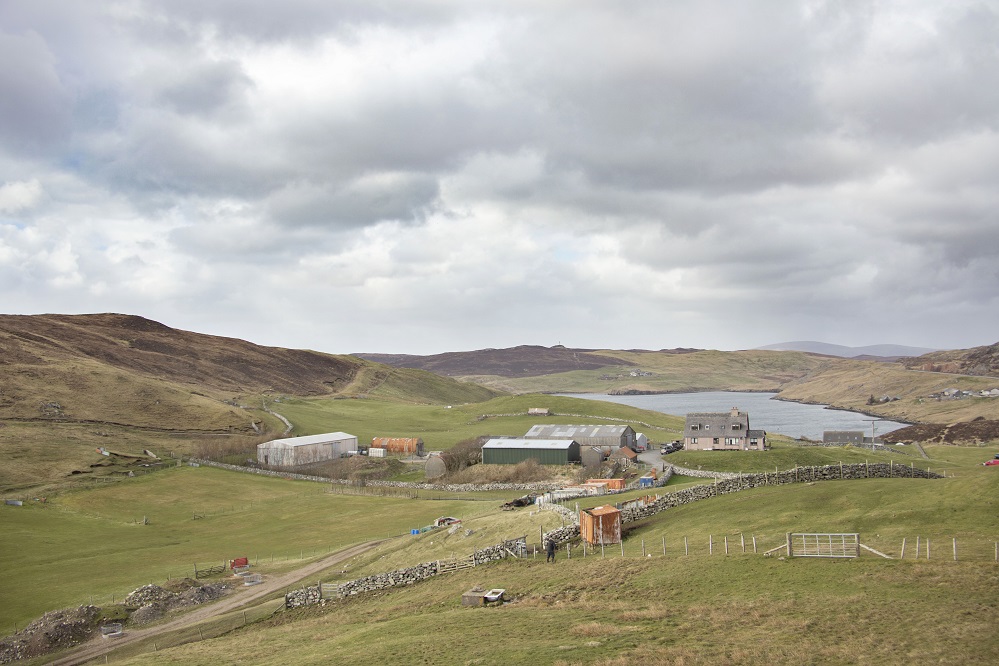
Islesburgh Farm, Northmavine
Q. You are members of the Shetland Flock Book Trust, and Margaret’s father joined close to its inception in 1927. Can you tell us a bit about the Flock Book and what it means to you?
Margaret: I’ve grown up with the Flock Book being part of my life. I would like to see it continue as it’s important to the breed.
Addie: It’s part of our lives and interests with the farming and it’s also partly a hobby.
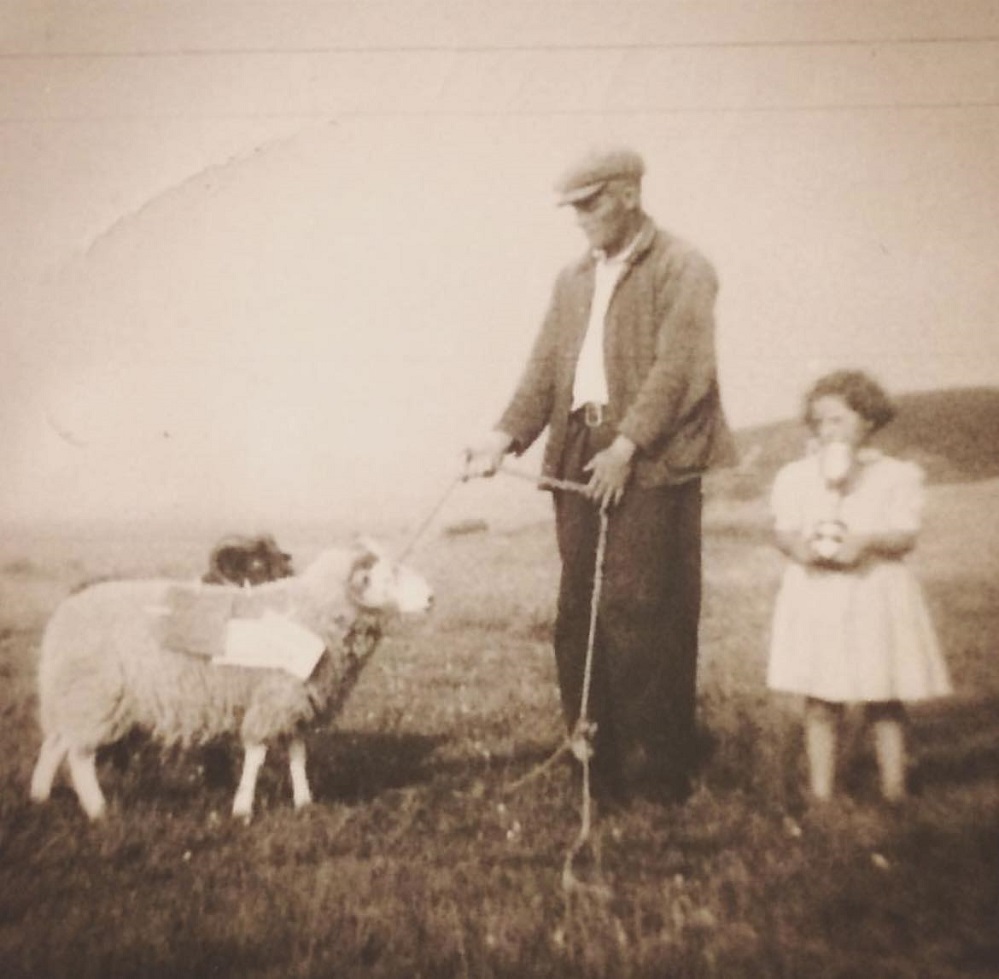
Margaret and her Grandad with one of his prize winning Shetland Rams. Margaret is holding the trophy.
Q. Why do you choose to breed Shetland Flock Book Sheep? What’s involved?
They are hardy and suit the land we farm on. The Breed Points are detailed in the ‘Green Book’ and that’s what we follow.

In order to preserve the characteristics of the Shetland breed, in 1927 the Shetland Flock Book Society was formed, and its members drew up the breed description that is still in use today. The fabulous description of the carriage is: “Alert and nimble, with a smart active gait”.
Q. There’s been a lot of interest and debate over the descriptions of Shetland sheep and wool, and in particular the natural coloured. Can you tell us about the significance of all these different shades and markings and what it means to the yarn?
Addie: More natural colours are now available for yarn. Anne saw this when she spoke to Ronnie at Uradale when choosing colours for the toorie. The different colours of fleeces opens up for many more shades when dyeing.
Q. Anne, you’re known for your caddy lambs… any favourites?
It’s impossible to pick a favourite, but when we spoke about this we all agreed the last ones we had in 2021 were special. We ended up with five and they stayed out before the house on the lawn. They were company for each other and were content with each other and when we had to put an injured lamb in with them at clipping time (a lamb that had been in one of the hill parks since it was born, so had no human contact since it was born) they looked after it and kept it calm until it was recuperated and strong again. Three of those caddies will be having their second lambs this year.
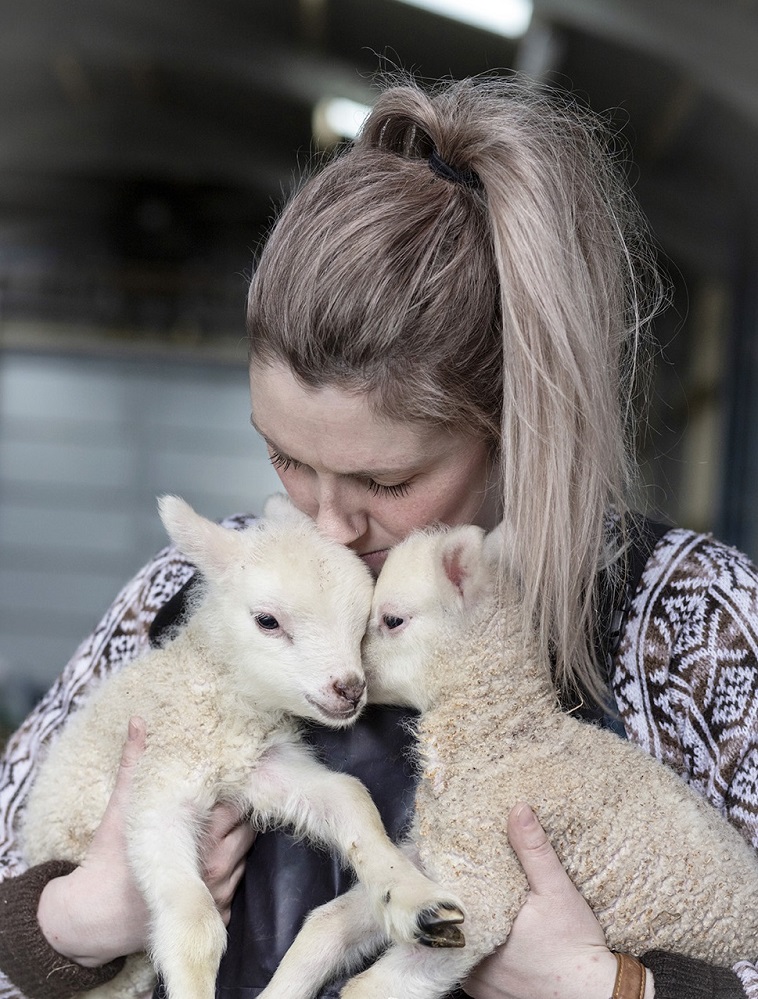
Q. What does a typical year look like for you on the farm – what are your highlights?
We all agree the highlight of the year is the lambing. It’s a busy, tiring time but there’s a lot of satisfaction seeing the lambs being born and thriving through the year. Shearing sheep on the islands with a fine day and going to the local shows throughout the summer are also special times.
Q. And next up in the calendar is lambing … how do you juggle all that with your day jobs – and keep awake?
Addie: A good bit of planning. Everyone has their jobs and knows what they are responsible for throughout the lambing. We work it along with our full-time jobs so having structure, routines and knowing what we are all responsible for helps greatly. Sleep when you can. If there’s half an hour you can sit down and sleep – do it.
Anne: If I am in between checks, especially late at night, I hate sleeping and waking up so I try to keep busy. So catching up with housework, getting food prepped for the next day and I’ll try to have a knitting project that I can ‘Grip and Slip’.
Q. It’s going to be a busy year for you as SWW patrons, what are you looking forward to most?
Addie & Margaret: We’re looking forward to everything involved with Wool Week.
Anne: I’m looking forward to people’s reaction to the Toorie and what colours they will choose and mostly Mam and Dad telling their story.
